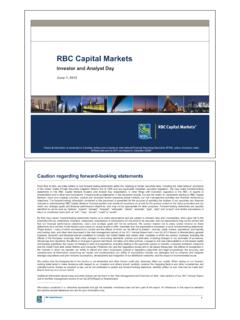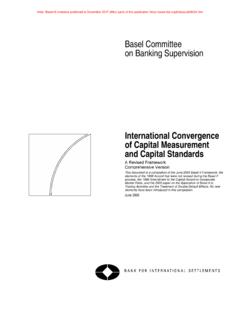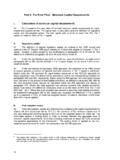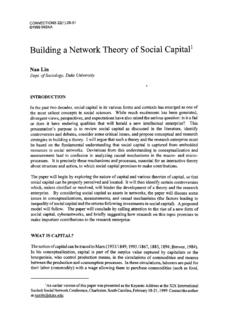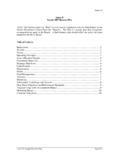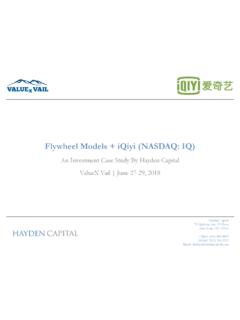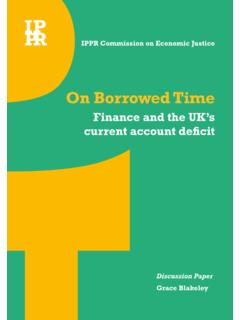Transcription of The Collapse of the Bretton Woods Fixed Exchange …
1 This PDF is a selection from an out-of-print volume from the National Bureau of Economic Research Volume Title: A Retrospective on the Bretton Woods System: Lessons for International Monetary Reform Volume Author/Editor: Michael D. Bordo and Barry Eichengreen, editors Volume Publisher: University of Chicago Press Volume ISBN: 0-226-06587-1. Volume URL: Conference Date: October 3-6, 1991. Publication Date: January 1993. Chapter Title: The Collapse of the Bretton Woods Fixed Exchange Rate System Chapter Author: Peter M. Garber Chapter URL: Chapter pages in book: (p. 461 - 494). 9 The Collapse of the Bretton Woods Fixed Exchange Rate System Peter M. Garber The Collapse of the Bretton Woods system of Fixed Exchange rates was one of the most accurately and generally predicted of major economic events.
2 ' Hind- sight, of course, sharpens the perception of the inevitability of events and makes great prophets of those members of the spectrum of analysts who hap- pened to get their predictions right. But the general outlines at least of the key events from 1967 through 1971 were foreseen, starting from the work of Trif- fin (1960), whose warnings provided the compass to policymakers imple- menting serious changes in the provision of liquidity and the administration of capital controls in a vain attempt to preserve the system. The heyday of Bretton Woods , during which the system actually operated as envisioned under full convertibility, lasted only from 1959 through 1968. Associated with steady growth in world production and trade, these nine years and the preceding decade of movement toward currency convertibility are considered something of a golden age in contrast to the six-year debacle of the interwar gold standard.
3 Yet, from the moment of full convertibility on current account transactions in 1959, the steady growth of official and private liquid dollar claims in the hands of foreigners and the reduction in official gold hold- ings, and especially holdings, convinced policymakers that, barring some alteration, the system was on a trajectory headed toward Peter M. Garber is professor of economics at Brown University and a research associate of the National Bureau of Economic Research. The author is grateful to Willem Buiter, Dale Henderson, the editors of this volume, and other conference participants for very helpful suggestions and to Robert Reville for research assistance. 1. For example, Triffin (1960) warned of the potential for the Collapse of the system, and Rueff stated, What I am sure of is that, if we remain in the same regime, we shall some day anive at the end of the means of external payments by the United States.
4 This will mean that, whether they want or not, whatever the agreement in the IMF and the GATT, they will have to establish an embargo on gold, establish quotas on import, impose restrictions such as the one they are now studying on foreign travel, and cut the links between nations (Rueff and Hirsch 1965, 14). 2. Why the cumulation of foreign liquid dollar claims was a problem is not clear. Of course, if gold holdings far exceeded foreign liquid dollar claims, either in private or in official hands, 461. 462 Peter M. Garber Starting from 1960, efforts to patch perceived deficiencies in the operation of the system assumed the form of perfecting interventions in the private gold market through the organization of the Gold Pool and the establishment of various formal liquidity-increasing techniques-the General Arrangements to Borrow (GAB), currency swaps among central banks, and special drawing rights (SDRs).
5 Essentially, these were new forms of lines of credit jerry-built atop the preexisting credit lines like intergovernmental and private bank loans and drawings under the IMF's original credit provisions. Analogous to inter- bank credit lines in a domestic banking system, such changes would have tended to reduce official demand for foreign reserves. If, as claimed by the United States, balance-of-payments deficits were the result of increases in the demand for liquid foreign Exchange reserves because of underdeveloped European capital markets (see Solomon 1982, 53-54), these changes, in re- ducing reserve demand, would have alleviated the U. S . balance-of-payments deficit, although they would have raised the price level and threatened the dollar convertibility of gold.
6 On the other hand, if the balance-of- payments deficits were brought about by excessive monetary expansion, as claimed by various European governments, these devices would have ac- celerated the crisis by reducing the demand for liquid dollar claims in the face of a monetary e ~ p a n s i o n . ~. The formation of the Gold Pool led generally to official gold sales by per- mitting an internal drain on gold and terminated in the speculative run on gold in 1968. As a temporary fix, the private market for gold was separated from the official market with the establishment of a floating private market price and a restriction that official holders of gold would transact only with each other. Finally, foreign central banks, spurred on by selling attacks on their currencies, participated in a final attack on gold, forcing an end of access to the gold window and generating a round of revaluations against the dol- foreigners could not successfully directly run gold reserves if the entire amount of reserves was made available to defend the parity.
7 As liquid claims accumulated sufficiently to exceed gold reserves, such a direct run was feasible. Nevertheless, the gulf between feasibil- ity and profitability can be. vast. More generally, although foreigners may have lacked sufficient liquid claims on the dollar to have staged a run, domestic residents had claims that far exceeded gold reserves. Al- though gold ownership by citizens was illegal, such claims could have been shifted abroad and quickly used to run the system. These claims were ignored in the discussions at the time (except perhaps in the budding monetary approaches such as that of Mundell [1971]). Perhaps it was thought that the bulk of the claims in the United States were retail claims unlikely to be mobilized in a speculative attack while the official and private foreign claims were wholesale.
8 Nevertheless, the wholesale money markets were the largest and the least restricted in the world. Alternatively, perhaps it was thought that controls could readily be placed on holders of liquid claims to prevent them from joining a speculative attack. The same, however, could be said for private foreign claimants, who controlled the bulk of the foreign claims. Foreign official claimants would have had to be treated more gingerly by authorities. 3. This identification problem about the causes of the European accumulation of liquid dollar claims framed much of the political dimension of the monetary debate of the 1960s. 463 The Collapse of the Bretton Woods Fixed Exchange Rate System lar. The last attempt to preserve the Fixed Exchange rate system through the Smithsonian Agreement was launched in December 1971.
9 In little more than a year, however, further speculative attacks were launched on the dollar, lead- ing to the final Collapse of the system in 1973 and the shift to a managed floating regime. Thus, the dollar standard period from 1968 to 1973 can be characterized as a period of recurrent devaluation. Interwoven with the dollar/gold trajectory of the system, other countries had episodes of foreign Exchange crisis during the 1960s. The most notable of these was the pound sterling crisis from 1964 to 1967, which culminated in the devaluation of 1967. Since the pound was the second most important of the reserve currencies, this devaluation contributed to the pressure on the dol- lar that led to the abandonment of the gold leg of the system in 1968.
10 Tangen- tially, internal political difficulties in France in 1968 caused the devaluation of the franc. Finally, reflecting the growing pressure on the system, the deutsche mark was revalued in 1969 and floated in May 1971 prior to the closing of the gold window, in response to selling attacks on the deutsche mark. The Collapse of Bretton Woods encompasses the events involved in the se- quential withdrawal of convertibility of gold into dollars, thereby ending the role of gold as a liquid dollar claim, and the end of the unified Fixed Exchange rate regime from 1968 through 1973. The Bretton Woods institutions them- selves, notably the International Monetary Fund, which had been the institu- tion overseeing the maintenance of convertibility of gold into the dollar and Fixed Exchange rates , continued their existence and their forms of operation.










